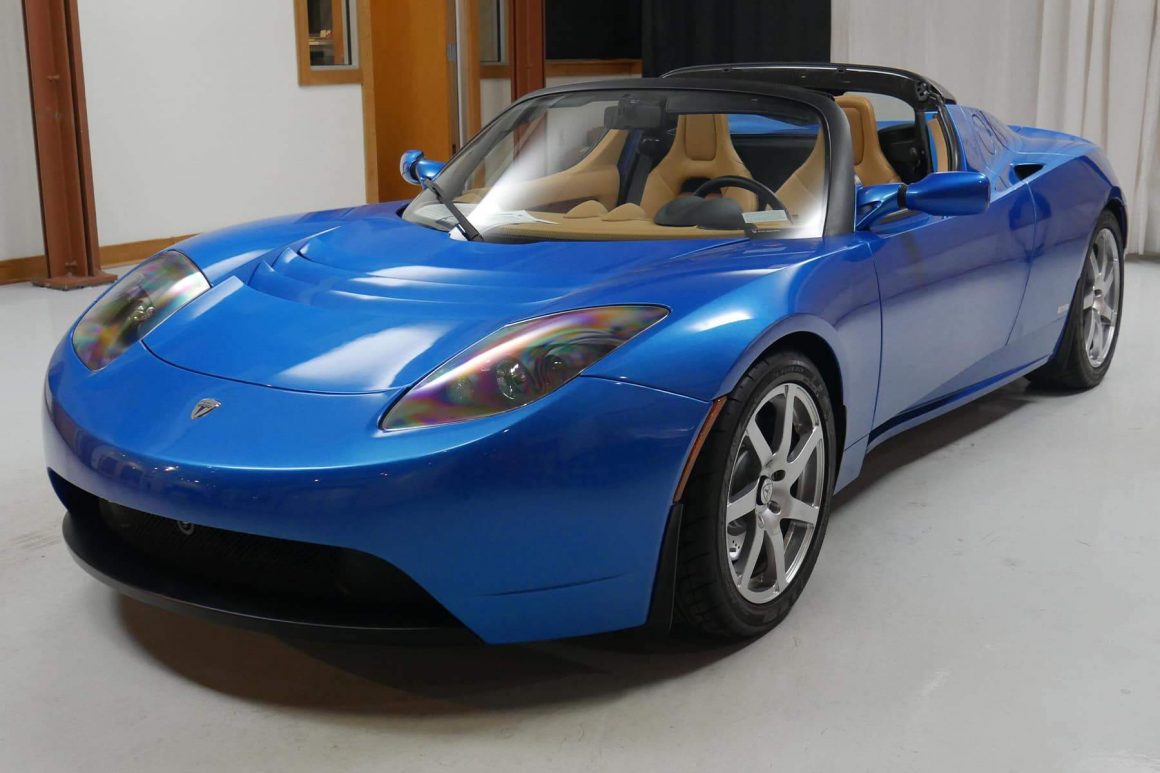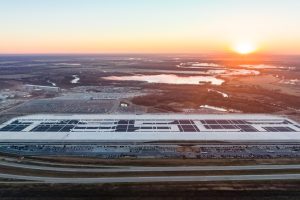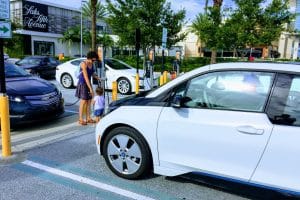If you drive a Tesla today, you can thank the Tesla Roadster for making it possible.
Tesla’s first car needed to be an exclusive (albeit pricey) limited-production sports car. Auto manufacturing relies on high-volume production to keep costs low, but it takes a lot of cash to build the factories needed to build high-volume cars. Tesla, as a startup in the 2000s, did not have access to that kind of cash. So, it went low volume, built the Roadster, and used that success to pave the way for the high-volume models we know and love today.
Unfortunately, only 2,500 Roadsters were produced. They’re rare enough that not many Tesla fans will have an opportunity to get up close and personal with one. The original Roadster is a great car with some clever engineering and a lot of fascinating features, including some that foreshadowed the future of Tesla’s technology.
Current Automotive Co-Founder Seneca Giese worked at Tesla from 2009 to 2018. His first role at Tesla was selling Roadsters and he’s spent more than 30,000 miles behind the wheel of various Roadsters. He’s a genuine expert on the car and provides a thorough overview of the landmark electric car that started everything for Tesla.
EXTERIOR
The earliest Roadsters had all of their body panels, including the bumpers, built out of carbon fiber. This expensive ultra-light material was crucial for maximizing the range and counteracting extra weight from the battery pack. Over time, Tesla was able to improve battery tech and use less carbon fiber – increasing range while reducing cost.
All Roadsters came with a soft top that could be rolled up and placed into a surprisingly spacious trunk. The car’s electric architecture is also beneath the rear lid.
UNDER THE HOOD
Roadster’s battery pack does not sit underneath the floor of the car, as is common of all newer electric vehicle platforms. The battery instead sits behind the occupant’s backs vertically, from the floor of the car up to the top. Underneath the housing, the pack is divided into eleven sheets with about 800 cells each. Behind the battery pack is the Power Electronics Module, which is akin to the brain of the car. Roadster’s PEM contains the on-board charger, which converts AC electricity from the grid into DC electricity for the battery.
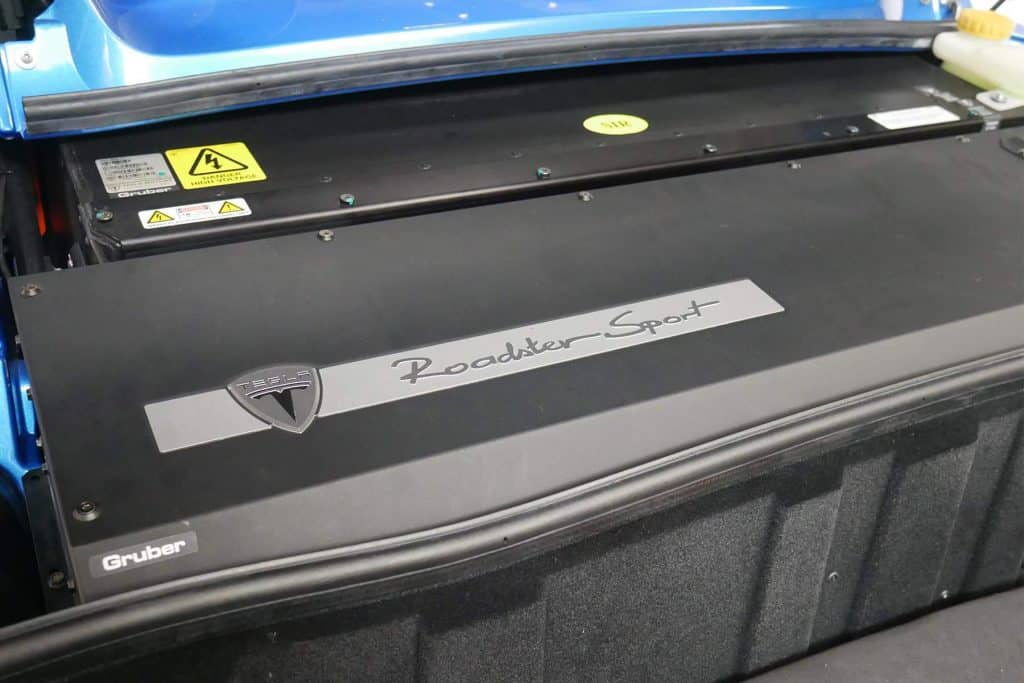
To the right of both of these units is a coolant reservoir that cycles the liquid coolant through the battery pack and other onboard electronics. Tesla vehicles are always tracking battery pack temperature, even when the car is parked and on standby. If needed, the computer will turn on the cooling system to keep the pack from overheating while parked. You can actually hear the coolant circulating in the Roadster if the car is parked in a quiet place.
Roadster is a little too small for a frunk. More electronics are placed underneath the forward-opening carbon fiber front hood, including AC condenser fans, power brake booster, and the emergency line first responders cut to make the car safe if they are responding to an accident.
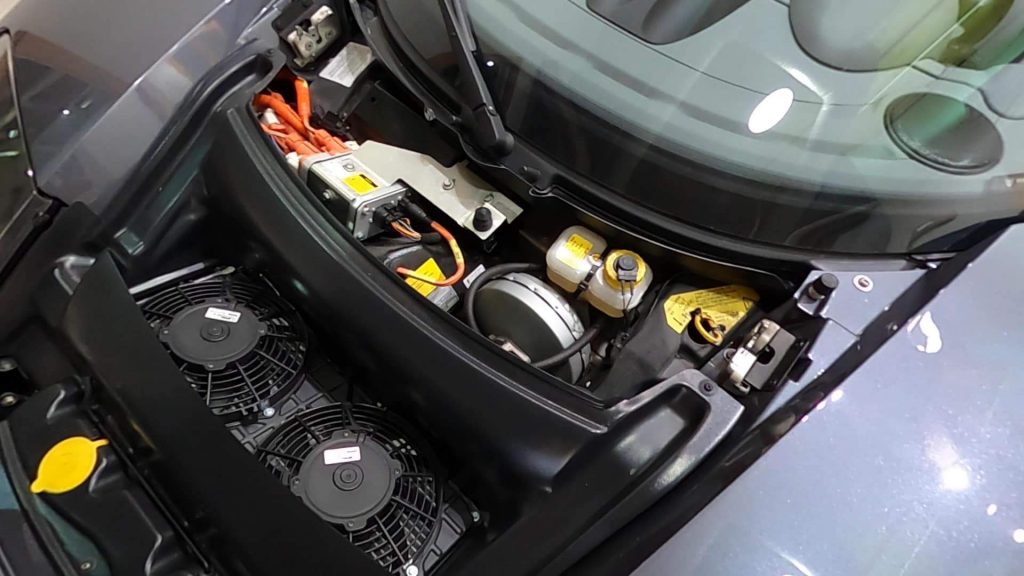
CHARGING
Roadster uses a unique 4-pin charging connector. The car was designed before the J1772 charging standard was released, and while Tesla was doing research and development for its own charging solution. The connector is big and bulky, with heavy-gauge wires and connector housings for safety. It saw a couple of revisions over the four-year production life of Roadster, becoming smaller and lighter each time.
When you open up the manual charge port door, a white helper light comes on. You then need to line up a guide-pin on the connector with a track on the charge port, rotate the connector along the track, and push forward on a locking mechanism to begin charging. There is a multi-colored indicator light to confirm the car is charging or tell you a fault has occurred.
Inside the car, four charging modes are accessible on the Vehicle Display Screen – a small screen in the center of the car that feels like a prototype of the big screens to come in future Tesla vehicles.
Storage Mode holds the state of charge at about 40% and manages battery temperature to nearly eliminate any potential battery degradation. Roadsters going any extended period of time without being driven should be set to this mode.
Standard Mode charges the battery to 90%, leaving the top 10% empty. It also keeps the bottom 10% in reserve, allowing the driver 80% usable capacity. This lower-intensity charging cycle reduces battery degradation in comparison to a full charge. This is the mode to use for regularly driven Roadsters.
Range Mode opens up the top and bottom 10%, allowing access to 100% of battery capacity for maximum range. It also uses the car’s AC system to keep the battery at a lower, more efficient temperature.
Performance Mode also charges the battery to 100% but keeps the bottom 10% in reserve – drivers have access to 90% of battery capacity. Performance mode also raises battery temperature to increase power output, much like Ludicrous Mode does on newer Tesla performance cars.
Additionally, you can configure scheduled charging to take advantage of cheaper electricity rates for charging at off-peak usage times (a feature now common on all electric vehicles). It also reduces the amount of power the car will draw to avoid blowing a breaker, and allows you to enter in an electricity cost so the car can calculate the cost of each charge.
INTERIOR
Roadster’s Vehicle Display Screen may be sized more like an iPod than an iPad, but it’s still the central place for controlling important functions of the electric vehicle. Beyond charging, its most important menus display driving information.
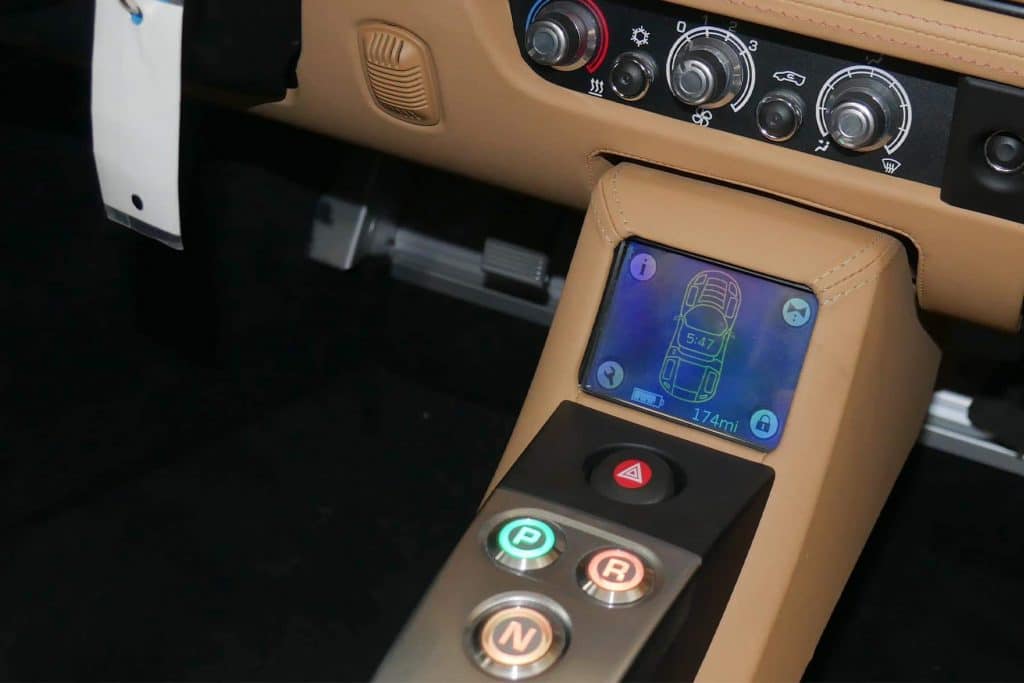
When driving, the screen defaults to displaying battery charge level and ideal vehicle range based on EPA conditions (we’ll come back to this) but has other readouts available. They include: energy meter, trip meter, performance statistics, temperature gauges, and a clock.
There’s a lot of functionality packed into that small screen. Maybe Tesla would have liked to make it larger, but the automaker was working with the bones of the small and sporty Lotus Elise, so there isn’t very much room inside the cockpit.
The small space led to a couple of other cleverly hidden features. The owner’s manual is tucked into a tight compartment underneath the passenger’s seat and the one (1) cupholder sits underneath the center console and slides out into the passenger side. If you have a passenger, they become your cupholder. A small dock in front of the gear selector features an old-school 30-pin connector for classic handheld Apple devices.
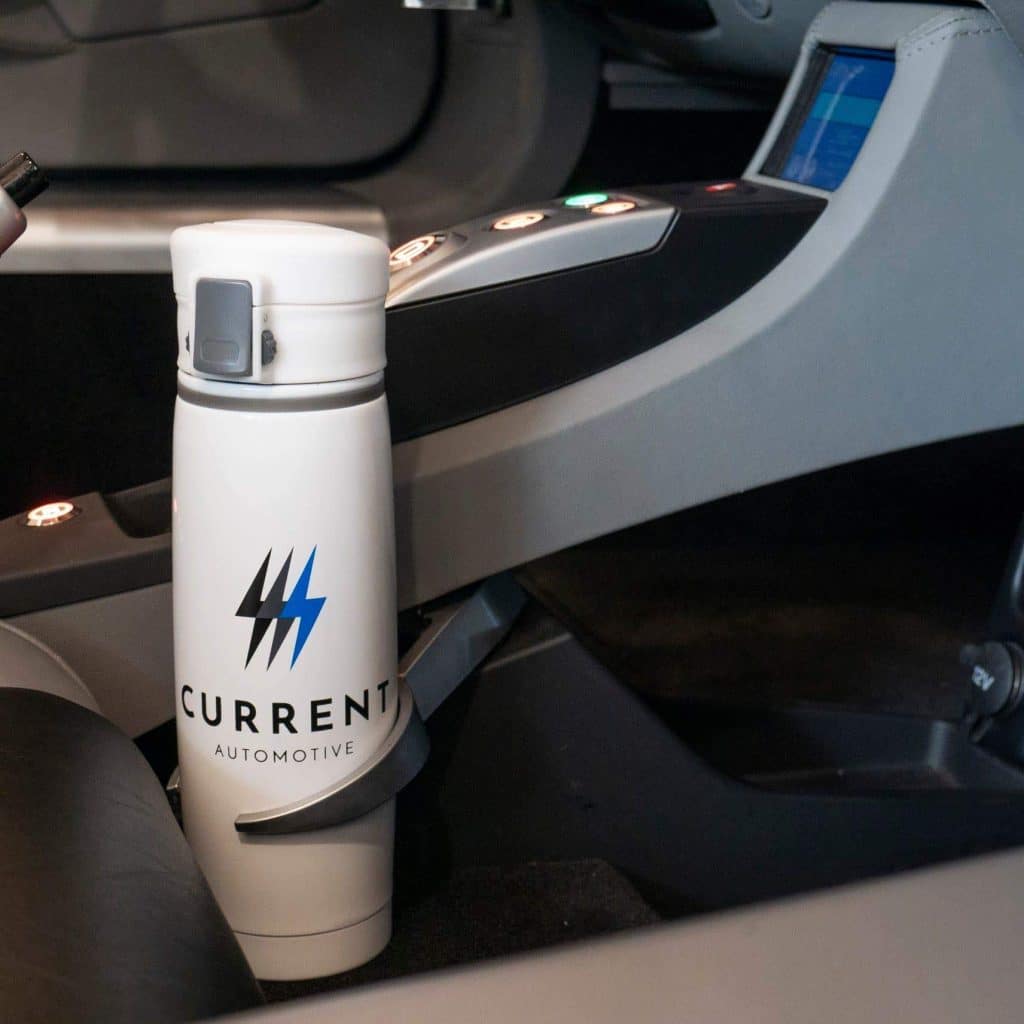
Unlike later Tesla vehicles, Roadster does feature a (mostly) traditional gauge cluster. There were two versions of the gauge cluster over the years – the first one on Roadster 1.5 had a separate tachometer and speedometer. This is a holdover from the original two-speed gearbox planned for the car.
On Roadster 2.0 and 2.5, the tachometer is doubled up with the speedometer, since Roadster’s single-speed transmission setup means motor RPM tracks constantly with speed. Zero RPM equals zero mph, while 14,000 RPM is the redline at Roadster’s top speed of about 125 mph. Next to the speed/tachometer is another gauge that is unique to electric vehicles: the power meter. It tracks how much energy is being discharged to drive or recharged back into the pack during regenerative braking.
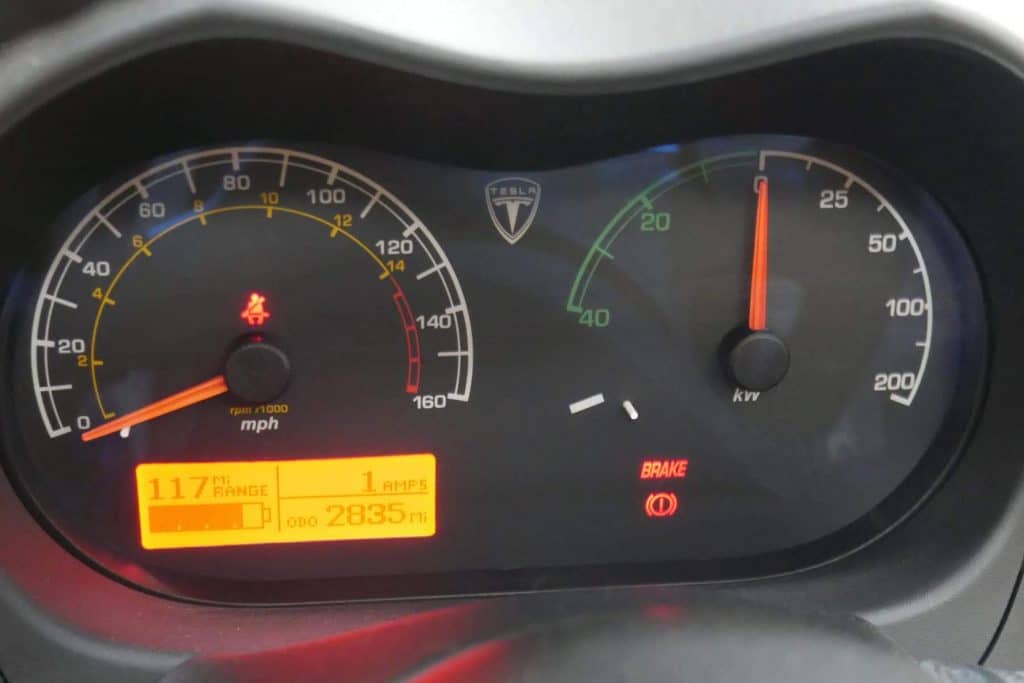
The gauge cluster also features a very basic digital display with odometer, battery charge level, and estimated range based on energy use from the last 40 miles driven. Range estimation is not an exact science, so drivers can compare this number with the ideal EPA estimate on the Vehicle Display Screen to get an idea of the worst/best case range scenarios.
This is very similar to how it works on modern Tesla vehicles. There’s only one range display for simplicity, but it estimates your range based on the last 30 miles of driving.
A TRUE PIONEER
From the important central screen to the practice of updating tech and lowering costs, Roadster really foreshadowed Tesla’s unique approach to the mass-production of its electric cars that followed years later. It also gave Tesla some early experience, credibility, and revenue in order to launch the production Model S and every model thereafter.
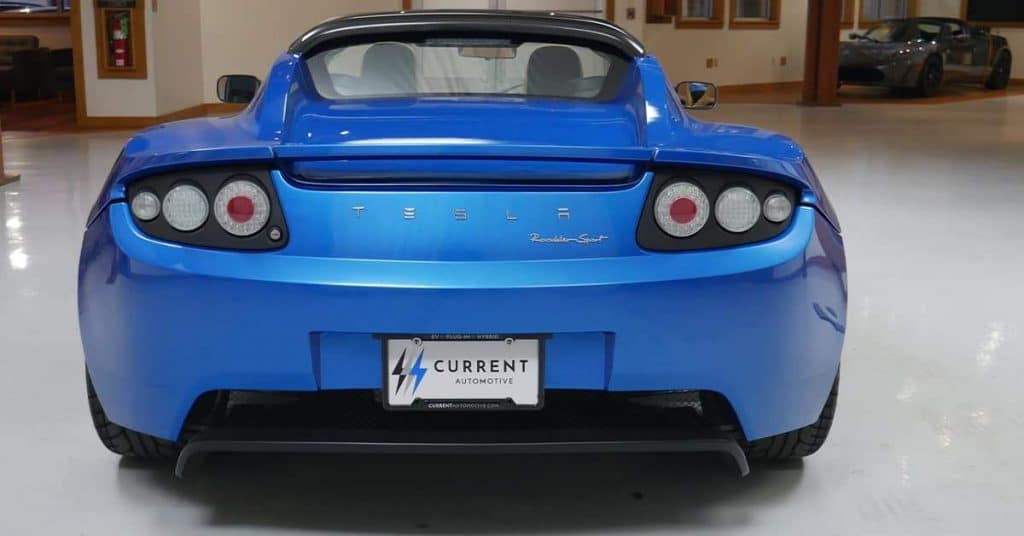
Roadster is a special EV, not just because it’s an utterly unique sportscar, but because of the place it holds in Tesla’s history.
===
Source: Current Automotive; Editor’s Note: Current Automotive is the first-ever U.S. car retailer focused exclusively on used electric cars launched by two former Tesla employees.
Original Publication by Matt Pressman at EVANNEX.
Want to buy a Tesla Model 3, Model Y, Model S, or Model X? Feel free to use my referral code to get some free Supercharging miles with your purchase: http://ts.la/guanyu3423
You can also get a $100 discount on Tesla Solar with that code. Let’s help accelerate the advent of a sustainable future.
